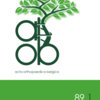Headless cannulated screw and external fixator in the treatment of type C distal femur fractures: Effect of early mobilization on clinical outcomes
Distal femur fracture, headless cannulated screw, external fixator, early weight bearing
Published online: Jun 08 2023
Abstract
Distal femur fractures occur due to high-energy trauma in young patients and with low-energy traumas in osteoporotic elderly patients. Implants selected for use in the treatment of distal femur fracture should provide stable fixation and allow early mobilization especially at elder patients. We aimed to investigate the effects of the headless cannulated screw and external fixator combination on the early mobilization of the patients and postoperative complications. Twenty-one patients with Type C distal femur fracture were included in the study.The fracture lines were temporarily fixed with K wires. After the fracture reduction with headless cannulated screws a tubular external fixator with carbon fiber rods was applied to bridge the knee joint. The external fixators were removed at the 6th week follow-up, and the patients were forced to perform knee flexion as much as they could tolerate. The 6th month KSS scores of the patients were 44.3 (34-60) and the 18th month KSS scores were 77.5 (60-88).Preoperative VAS score was 8(7-10) and postoperative VAS score was 4(3-6).Knee flexion of the patients at 6th months was 95.9 (80-110 degrees) and at 6th months knee flexion was 114.5 (100-125 degrees). Superficial pin site infection was observed at 4 patients and regressed with antibiotic therapy. Combination of cannulated screws with an external fixator for joint restoration in type C distal femur fractures allows early mobilization and reduces postoperative morbidity.
